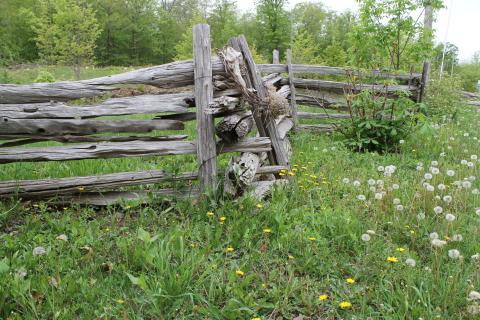
Those of you who have done as much travelling up and down the backroads of Ontario as I have are probably already familiar with snake fences, which cut zigzag paths along road sides and property lines throughout rural areas of the province that were settled in the 18th and 19th centuries.
These snake fences, which are sometimes referred to as split rail fences, were constructed by the province's early European settlers using stands of cedar that were ubiquitous throughout much of the province. The popularity of this style of fence stemmed from the fact that it didn't require postholes to be dug or nails to hold the wood together and could be erected on pretty much any surface, a useful feature since so much of Ontario is dominated by the Canadian Shield, which can only be "dug" using explosives.
Snake fences were constructed using cedar logs that had been split lengthwise and stacked on the ground in a zigzag pattern formed by each section of the fence connecting with the next at roughly a 120 degree angle. They were popular with settlers who had few tools at their disposal and little money. A fence that could be constructed simply by chopping, splitting and stacking logs was a godsend. As an added bonus, cedar is slow to rot, which means many of the snake fences built more than a century ago still stand to this day unless someone somewhere along the way physically dismantled them. You can still see them snaking between fields over much of rural Ontario and they remain plentiful on Manitoulin Island.
The photo above is of a snake fence that runs between the old Bryan and Amer properties in Tehkummah. If I'd known I was going to write about snake fences several years down the road, I would've taken a more representative picture using a wide angle lens so that you could see the distinctive snaking pattern of the rails.
This particular fence was still under construction when the Bryans were murdered by the Amers, and was the cause of considerable strife between the two families. At one point, the Bryan men "accidentally" set it on fire. No one really believed their claim that the fire was anything short of arson, but their insistence the wind had kicked up after they'd built a bonfire nearby in order to burn stumps they'd pulled from their field couldn't easily be refuted.
In the end, this half-constructed, mildly singed fence was the reason the Amer's horses were able to wander into the Bryan's fields where they were seized, setting off a deadly chain of events.